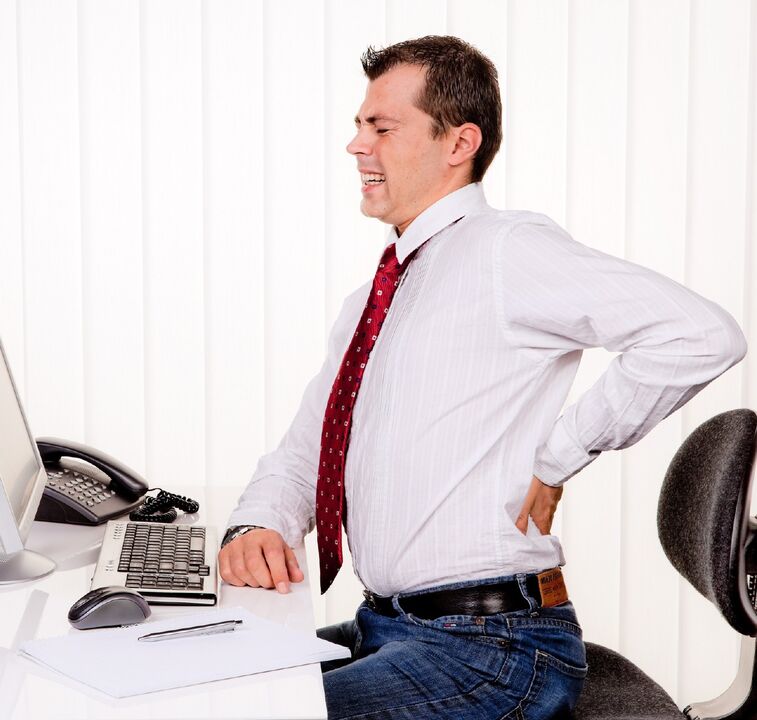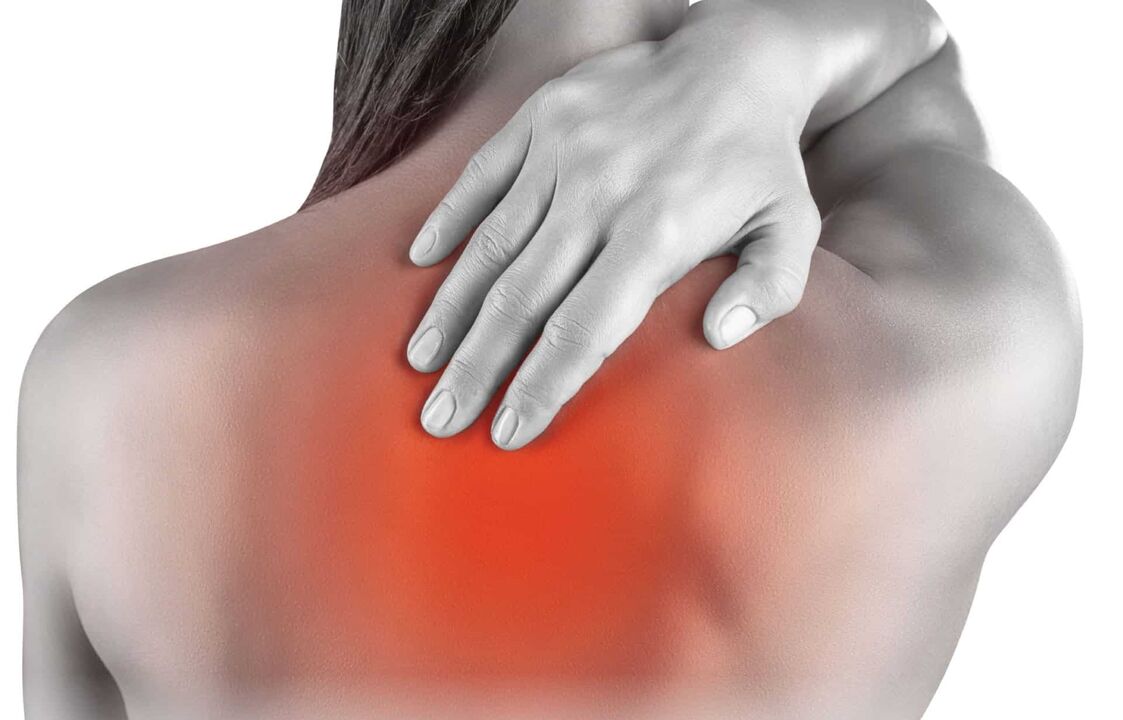
What it is: Osteochondrosis is a disease of the spine in which the intervertebral discs (and subsequently the vertebral bodies, joints and ligaments) lose the ability to function normally. Until recently, the disease was considered age-related, but in recent decades it has become noticeably younger and mercilessly affects young people between the ages of 18 and 30.
Osteochondrosis is usually classified according to the place of its localization: lumbar, cervical, thoracic, sacral and diffuse. Over 50% of cases of the disease are responsible for osteochondrosis of the lumbar spine; the symptoms, treatment and diagnosis of this type of osteochondrosis are widely described in the works of medical luminaries. A quarter of diagnoses are due to cervical osteochondrosis, a disease of employees and people who lead a sedentary lifestyle.
Most often, the pathological processes in this disease first affect the bones and ligaments. We usually find that the disease has already begun when complications appear: pain, sensory disturbances, muscle atrophy, disruption of internal organs.
Today we will talk about osteochondrosis, the symptoms and treatment of this disease is a very topical topic in our time. After all, 40 to 90% of the world's population suffers from the disease. Most often, the disease affects people over the age of 30.
Causes of the event
There is no single reason for the development of osteochondrosis. Some believe that a disorder occurs due to the deposition of calcium compounds not absorbed by the bone tissue due to the deterioration of the bone blood supply caused by weakness, curvature of the spine and decreased distance between individual vertebrae.
There are many predisposing causal factors. The main ones are the following:
- spinal injuries (fractures, bruises, dislocations);
- hereditary predisposition;
- foot diseases that cause overload of the spine - these include flat feet, clubfoot (varus deformity of the foot), hallux valgus;
- wearing tight and uncomfortable shoes for a long time (also causes overload of the spine);
- overweight and obesity;
- sedentary lifestyle;
- metabolic disorders;
- curvature of the spine (kyphosis, lordosis, scoliosis);
- professional features: weight lifting, frequent turns and jerks of the body, work in an uncomfortable position of the body.
The development of the disease is facilitated by a hereditary predisposition, overload of the spine (overweight, heavy lifting), trauma and microtrauma.
Stages of osteochondrosis
According to the level of development of osteochondrosis and its symptoms, there are four stages.
- First stage- preclinical, which is diagnosed very rarely due to mild (or completely absent) signs of the disease. At this stage, the changes in the spine are minimal. Patients are concerned about pain limited to the spine and there is tension in the back muscles.
- In the second stagepains appear, as the fibrous ring of the intervertebral disc is destroyed, the fixation of the vertebrae between them is disturbed, their pathological mobility occurs in the form of displacements. The intervertebral distance decreases, with the compression of the neurovascular endings, of the blood and lymphatic vessels.
- Third stage. . . A rupture is formed in the cartilage tissues of the fibrous ring, through which a more liquid part of the nucleus filters: a herniated intervertebral disc is formed. Such changes are most often found in the lumbar and cervical spine. To a lesser extent, the appearance of intervertebral hernias is susceptible to the thoracic region due to the fact that, due to the pathology of the disc, a certain part of the load is absorbed by the ribs and sternum. As a result of the protrusion (herniation) of the intervertebral disc, there is an effect on the roots of the spinal nerves, which manifests itself in the form of pain, inflammation, impaired nerve fiber conduction and inflammation.
- Fourth stage- final, in which the scar tissue is replaced by the fibers of the intervertebral disc, as well as by the fibrous cartilage and by the fibrous tissue of the nucleus pulposus.
In order to prevent the development of the last stage, it is necessary to decide how to treat osteochondrosis in a timely manner.

Symptoms of osteochondrosis
Osteochondrosis is a chronic disease characterized by alternating periods of symptom exacerbation and remission. Excessive exercise, fatigue, hypothermia, injuries, tremors, and vibrations can all contribute to acute symptoms.
The disease manifests itself with a number of typical symptoms. Osteochondrosis of the spine is characterized by: aching back pain, numbness of the affected spine, decreased range of motion, increased pain when lifting weights, sudden movement, tension when coughing or sneezing.
Chronic pain, as one of the symptoms of spinal osteochondrosis, causes increased fatigue. When the nerve roots are squeezed by the discs of the spinal column, the pain can be more intense and be sharp and "shooting" in nature. Its localization in this case is not limited to the back area, but is perceived by a person in the area of the limbs.
With osteochondrosis, patients describe symptoms such as:
- paroxysmal or stabbing pain in the spine affected by osteochondrosis;
- increased pain after physical exertion, as well as in the morning;
- pain may radiate to the neck, arm, or leg, as well as to the chest;
- creaking sensation when doing twists.
The disease begins and develops gradually, so how to treat osteochondrosis will depend on the stage and location of the spinal injury.
Treatment of osteochondrosis
In the case of osteochondrosis, treatment requires complex measures.
In the acute stage, strict bed rest is shown, rigid fixation of damaged vertebrae using a special corset or collar. A stable bed, use of a shield, restriction of movement is recommended.
To reduce pain, analgesics, B vitamins, novocaine blocks, non-steroidal anti-inflammatory drugs, rubbing with ointments, mustard plasters, ultraviolet irradiation, acupuncture and reflexology, thermal procedures, wool belt, etc. are shown.
The next stage of treatment aims to improve local blood circulation and strengthen the muscles that support the spine. To cure osteochondrosis, it is necessary to adhere to complex therapy, which includes:
- medical massage (traditional, hardware, vacuum);
- physiotherapy exercises, swimming;
- physiotherapy (treatment with laser, ultrasound, low frequency currents, magnetic field; shock wave therapy, cryotherapy);
- reflexology (acupuncture, acupressure);
- spinal traction (dry or water);
- methods of non-traditional therapy (treatment with bee stings);
- treatment with folk remedies (herbs, honey, mustard, red pepper, bath).
If conservative therapy does not bring results or changes in the intervertebral discs require external intervention, modern minimally invasive surgical methods are used: laser reconstruction, intradiscal electrothermal therapy, microsurgical removal of the hernia.
In case of irreversible changes, an artificial intervertebral disc made of metal or metal and plastic can be installed. So, now let's take a closer look at how to treat osteochondrosis without the use of drugs.
Massage
Back massage with osteochondrosis has a much more pronounced effect than, for example, physical therapy. First of all, any treatment method should be aimed at relieving pain.
When the pain can be relieved or relieved, real treatment can begin. But its main task can be called the prevention of the progression of the disease, as well as its subsequent possible relapses. It is for these purposes that two key methods are used - remedial gymnastics and massage. It is worth noting that in cases with the neck, exercise does not have the same effect as massage.
Judge for yourself: massage improves blood circulation in the affected area, eliminates spasms of the muscles of the neck and back, weakens or eliminates pain, strengthens the muscles of the neck.
Acupuncture
Acupuncture is widely used in the treatment of osteochondrosis. Acupuncture helps relieve pain, relaxes the back muscles and helps restore damaged tissue by stimulating metabolic processes.
In some cases, acupuncture can replace traditional drug therapy, the disadvantages of which are well known (side effects of drugs, addiction to them). Acupuncture is contraindicated for skin diseases affecting the back and during pregnancy.
Physical therapy for osteochondrosis
Remedial gymnastics for people suffering from diseases such as osteochondrosis should become a necessary part of life. It is physical therapy that can break the vicious circle, consisting of the following components: physical inactivity, weakened muscles of the back and neck, destruction of the vertebral discs, bed rest.
Before you start exercising, you should know the basics of therapeutic exercises for osteochondrosis:
- Exercises should not be performed at the stage of exacerbation of the disease, when there is a severe pain syndrome.
- Exercise shouldn't cause increased pain.
- Complexes with tension in the back muscles should alternate with relaxation complexes.
- All exercises are performed smoothly, without sudden movements, while maintaining correct body posture.
For each type of osteochondrosis, its own exercise complexes have been developed. However, to prevent the spread of the disease, it is recommended to train the muscular system of the entire spine.
























